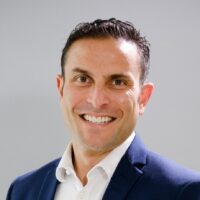Organizations will spend fortunes protecting their buildings, vehicles and equipment (for obvious reasons). However, executive health is often overlooked. This is surprising, because if an executive is not performing optimally due to ill health, the ultimate cost is greater than if preventative measures had been put in place. We spoke to Dr. Jedd Myers, the CEO of Health Impact, about the importance of executive health, longevity and corporate performance.
Executive Health In Organizations Is Under Appreciated
We spoke with Dr. Jedd Myers, co-founder and CEO of Health Impact, a group of healthcare and wellness businesses focusing on corporate and insurance-based clinical services, to better understand why executive health is so under-appreciated in the corporate world, and how simple changes can have an impact on the entire company.
Q: Why is it so important to have the right structures in place when it comes to executive health?
A: In the past, the message around an executive having a medical issue was of a snapshot nature, very one-dimensional. It’s typically with a GP, and [usually delivers] a very high-level set of results. It’s almost like a green light – you’re healthy or you’re not healthy, and [the results are] usually used for insurance purposes or just for general knowledge.
The problem with that type of approach is that it’s one snapshot… if all that’s been happening is a tick-box snapshot of a process, without an in-depth understanding of individual and organizational risk, you’ve lost the opportunity.
Then, these messages are [typically] quite patronizing. What I mean by that is that with most executives, if you ask them how long it’s been since they’ve had a health check, the typical answer you’re going to get is, “I don’t need to go. I know exactly what they’re going to tell me. They’re going to tell me I drink too much, I don’t exercise enough, and I need to eat better.”
The harder you work, the less you sleep is often seen as a badge of honor
It’s kind of seen as a badge of honor, of not buying into the notion of healthcare. The harder you work, the less you sleep, the more you can drink at the business lunch [the better]. And with those constructs, I think there’s a phenomenon of complete ignorance around the health of executives, as a general rule.
Most don’t understand where they are in terms of their health, but, even more importantly, [they don’t understand] what risks they’re facing right now, and where they are in terms of… the impact on their performance. Because if you take the construct of general longevity and health span and try to apply it to this context, everybody is on some type of diminishing curve of performance in their life, be it functionally, be it intellectually, be it emotionally.
Q: Do we have any control over the speed of the performance curve?
A: The good news is yes. Furthermore, you’re able to shift the initiation and gradual decline quite extensively through a range of interventions: exercise, nutrition, sleep, medication, etc. What happens in that regard is that, once you boost your longevity, your chance of living longer is higher, but, more importantly, your ability to perform… is significantly improved.
And in the executive population, not understanding if you’re at risk of dying young… or at risk of having significantly impacted performance, and the ignorance around those two factors, is irresponsible.
But in most corporate settings, not knowing your health isn’t a critical element. From an executive perspective, in most companies, you’d be excused for not knowing that and not caring about that.
But it’s not sustainable. There’s going to be a point in time, either in their performance as a business or as an individual, when they’re going to be impacted through poor health.
Q: Why do we need to adopt a different approach?
A: Because [with the snapshot approach] you don’t know where you’re capturing someone on this continuum. A great example is insulin resistance, which is the underlying pathophysiology of Type 2 diabetes. It can precede the onset of Type 2 diabetes by a decade.
So, you could be building up insulin resistance for 10 years before you’re diagnosed as a Type 2 diabetic. And if all you’re looking for is the presence of diabetes, you could’ve missed 10 years… not only from a build-up of pathology in his body but [in terms of the impact] on his performance.
Fatigue, mood changes are some of the executive health risks to look out for
So often, we question executives, and they’re tired and exhausted come the afternoon. They’re unable to concentrate, specifically in the afternoon. They have problems sleeping. They have mood changes. So we find that the impact of poor health, the impact of understanding health risks in the executive population, to be one of the key determinants. It’s one of the key risks that should be monitored, and one of the key determinants of organizational performance.
A growing proportion of executives are suffering from significant signs of mental and emotional distress, and that has an exponential impact on an executive’s ability to perform and function, as an individual, and as an executive and an entrepreneur, when we deal in the entrepreneurial space. We’re seeing a significant risk of burnout.
Q: How did we get to a position of poor executive health?
A: People often avoid confronting the issue, if they’re aware of it at all, because it requires a great deal of vulnerability to admit that they’ve lost control of their weight, or have trouble finding time to exercise, or don’t know what to eat, so they can be healthier. Not knowing where to go or how to fix things can be very hard to admit.
At the same time, in most big organizations, COVID really triggered a massive response in terms of health. If you look at the statistics of those individuals at risk of severe COVID-19 infection and death, it was people about 45 years of age with comorbidities.
Executives are primed for ill health
That is literally describing the executive landscape in South Africa and around the world. People are 45 years of age and slightly overweight, which implies that they’re all at some level of insulin resistance, leveraging into some type of high blood pressure and dyslipidemia.
In other words, the executive population was primed for this. They’re also under immense stress. Their working hours are long. The pressures of the job are real, and they’ve been in their careers for a long time, performing at a very high level for a long time. That’s a compelling reason to have an effective executive health program present in these organizations.
Q: What does a proper executive check-up look like?
A: There are a few key points. Executives need to feel comfortable engaging with a service that is both credible and discreet. And it doesn’t work to just send the executive to their GP, because it also has to be a service that provides the broader organization with sight of the underlying risks and trends.
They might not understand the risks attached to every single executive individually, but the organization needs to understand the risks and the trends, and how these can have an impact [on the organization].
The next thing is that it has to be rooted in solid science, with appropriate action plans that can be built out of them. The take-home value needs to be solid – you want it to be integrated, and what we refer to as multidisciplinary.
Therefore, a number of different professionals engage these executives to assess different elements of their risk profile, from a mental-health and wellbeing perspective to physical.
Educating the leadership about healthier outcomes
You want them to be taught about nutrition, exercise and mindfulness. All of these key levers are critical in generating and understanding the risk of that executive as an individual, a holistic individual, and… what the steps are for them to maintain good health, optimize performance and reduce risk.
And then the reporting, the data and analytics, and management of these executives are also important. So, all those different pockets come together. At ExecCare, we’ve set up an environment that makes the executive feel comfortable going through this process, and we’re trying to break the stigma of this being a purely clinical experience.
Q: Where does ergonomics come into play?
A: Ergonomics definitely plays a role, importantly on the performance side, because the big pockets of risk we’re trying to look out for are mental, cardiovascular, cancer, neurodegenerative and others.
We do a thorough ergonomic assessment. We can coach executives in their positions at their desks. Many executives we see have this forward-tilting head on the phenomenon, because everyone is on their laptops, looking down. So we coach them to lift up their screen.
Also, sitting for a prolonged period of time is also an independent risk factor. Not just being sedentary, but sitting over and above being sedentary is an independent risk factor. So if you’re going to be sitting, ergonomically, you want to be in the best position.
Furthermore, it assists with breathing, with posture, [and] with concentration. Poor posture can be corrected through exercise, stability, [activities such as] pilates and yoga, and activation of the core. The effects of breathing [properly] can be monumental in someone’s life – knowing how to use your breath can help you to focus, concentrate, fall asleep and relax.
Q: What is the role of the executive’s family and friendships in their wellbeing?
A: The construct of interpersonal relationships has been documented as a significant factor in the longevity of individuals. In the notion of the Blue Zones, the one thing that stands out to me… is the relationships and interpersonal connections they have.
Relationships are important
We try to assess the quality of executives’ interpersonal relationships, especially in the family structure. If there’s tension in the family structure, that needs to be understood. They may have intermarital problems, problems with partners or children, or broader family problems. This can have a massive impact on their general sense of wellbeing, mentally and physically.
That’s one area to think about. So, in terms of health, behavior and adoption, the family structure is critically important.
For example, if you and your spouse smoke together and one of you decides to stop, but the other carries on smoking, the chances of your succeeding are very low. The same goes for if you’re trying to adopt an exercise program and your partner is sedentary. If you can’t get buy-in from your broader family, the chance of that behavior changing, or you adopting healthy habits, is low. The chance that it’s going to be adhered to and maintained is even lower. This is something that needs to be understood, integrated and maintained in the broad structure.
Q: What are the most important components of a successful workplace wellness program?
A: I think the first thing to understand – what organizations need to ask themselves – is what they’re trying to solve for in the workplace wellness program. Are they there to tick a box? Are they there to be reactive to the healthcare needs of their employees, or are they really trying to gauge where health can be a performance amplifier in the organization?
Using health as a lever to amplify performance in organizations] takes form across a range of services. First, you want to ensure compliance and safety.
Workplace wellness requires a multi-dimensional approach
You can have the best program in the world, and someone can [still] fall off a flight of stairs and injure themselves because the banisters aren’t secured tightly, or there isn’t an evacuation plan in the event of a fire.
You want to make sure people [are working] in a building that’s safe for them, and you want people who’re doing risky jobs to be trained and go through the right kind of processes.
So you want to have a process that you can effectively screen, so pull and push people into a screening process for the range of services you think are going to be effective. And that ranges from mental health to physical health, to emotional health and spiritual health.
We feel these should all be integrated. It’s almost impossible to run an effective mental-health program without a physical-health component. Here, some of the incentive programs work very well.
But you also want to start engaging people very early and see, through outbound surveys, questionnaires and engagements, where the risk trends lie. Then you can focus the intervention on what you’re picking up as the risk.
A one size fits all approach does not work!
We really feel that a generic, one-for-all approach doesn’t work. Rather, you should have a customized solution per organization that you’re dealing with. You also want to cover the broad spectrum of health, from a physical-health perspective, emotional-health perspective and spiritual-health perspective.
And then you need a provider that’s able to take all of this data, understand it, and present it to an organization in a way that’s confidential, but highlights the correct trends, and guides the organization through the journey of electing what interventions should take place.

We’re always working towards that “aha” moment, you know, when they finally get it. If we can take a group of executives on a wellness journey triggered by one wellness epiphany, the general health of that organization is going to improve, and the performance of that organization is going to improve. And that’s why we exist, to take that population through a journey of improved performance.
Q: How can AI be used for better corporate wellbeing?
A: At Health Impact, we’ve started to use AI to assist us in predicting health outcomes, as well as screening and risk stratifying. We’ve also started to use AI to guide people into different treatment strategies or channels, and it’s been enormously effective for us.
I do see it as a huge lever in the future of all healthcare – in fact, all of our lives, but particularly in the workplace. It’s a super-powerful technology.
But we’ve always differentiated ourselves in that we’re a business that’s been built and run by our clinicians. So we try to take those credentials and match them with the technology. This allows us to really deliver quite a powerful solution.
Q: What are the performance and productivity benefits to the company if executive and employee wellness is done right?
A: A lot of time is spent understanding and managing risk in the context of health. What is often lost here is that health is also an amplifier of performance. It’s the key silver bullet in taking an organization from poor to good, or from good to great. We want to position this in a different way. I always say I’ve never come across a smoker who is adamant that smoking is good for them.
To sit in front of smokers in an executive wellness setting and tell them that they need to stop is such a patronizing message, and not at all effective. Instead, what you want to show them is how it’s affecting day-to-day performance, and how leaving smoking behind can assist them in amplifying their performance.
Q: How can you leverage your health to enhance your performance and beat your competitors?
A: Your health is the platform for your performance, and when you realize this, it’s what’s going to get you where you want to be.
The key determining characteristic of executives going through difficult periods is resilience. They can’t be the ones who buckle. They need the resilience and the capacity to go through difficult times and steer the ship. Their resilience has an effect on their productivity, their agility, and their mental acuities. If their health is compromised, they won’t be able to perform at their best.
You need to be on top of your game if you are paid to make critical decisions
I’ll never forget, I read a very interesting interview with Jeff Bezos, and he explained that all he’s paid to do is make a few key decisions every day. He’s not paid to work. It’s all about the decisions he makes on behalf of Amazon. His organization can’t afford for him not to be crystal-clear when he does this.
They can’t afford for him not to concentrate, or have any trouble focusing. It makes sense that his executive health outcomes are critical to the financial outcomes of the business.
The Making of a Corporate Athlete
There’s a study in Harvard Business Review called The Making of the Corporate Athlete. It makes a comparison between high-performing corporate executives and professional sportsmen. There are some commonalities, and then several major differences.
First, these sportsmen are expected to deliver their best every time they play. Now, this is also true for corporate executives. Every time they rock up at the office, they’re expected to deliver at their best.
How long will you be working for?
But the difference between the average professional athlete and the corporate executive is this: their careers are significantly shorter.
I’ve personally been going for around 20 years. I think I still have a couple of decades left. That’s unheard of for most professional athletes. They train their whole lives to get to a career that lasts only about five to 10 years.
The other difference is that professional athletes perform only about once a week. However, executives need to perform every single day. The argument here is that if you can leverage your health to your best advantage, you can leave your competitors behind. That’s a differentiator in terms of efficacy.
Your physical capacity is the platform to leverage all other capacities
In this study, they talk about something called the high-performance pyramid. It takes into account that there are a range of different capacities you need to reach in order to be efficacious in every aspect of your performance. At the bottom of the pyramid is the physical.
Your engine is your body, and if you don’t take care of it, you’re compromised, which means all the other capacities are also compromised. Your physical capacity is the platform to leverage all these other capacities: emotional, mental and spiritual.
Life span is a tenure and health span is about productivity and efficacy
So when you get this right, you’re able to move in and out of different phases, be resilient, be at work and be able to deal with different exciting and difficult challenges. Go home and be a present family member.
You also want both the years in your life and life in your years. I argue that lifespan can be considered tenure, and health span can be considered productivity/efficacy. How long will your execs be effective?
The bottom line
In Dr Peter Attia’s book Outlive, he argues that if you want this, you don’t want this prolonged deterioration at the end of your life. If you have poor health in your execs, that’s what you’re looking at.
You want a solid engine (healthy body) featuring good cardiovascular energy and metabolic health, with good musculoskeletal health, good hormonal health and mitochondrial health. Once executives understand this, the change we see in them is inspirational.
They look better, feel better and perform better. Can you imagine the impact this approach to executive health could have on your organization?
Main photo credit:Andrea Piacquadio/Pexels
Read more on executive health and living better for longer
This article was originally published in print format for the Longevity Annual Print Edition 2024/5 Living Beyond 100. If you would like to buy a copy of the digital magazine, click here.




![women [longevity live]](https://longevitylive.com/wp-content/uploads/2020/01/photo-of-women-walking-down-the-street-1116984-100x100.jpg)










